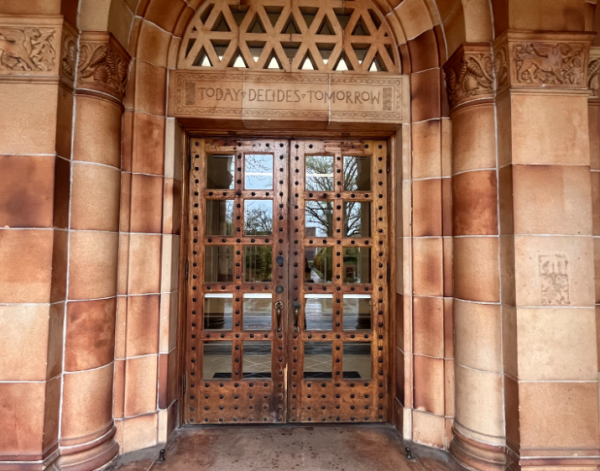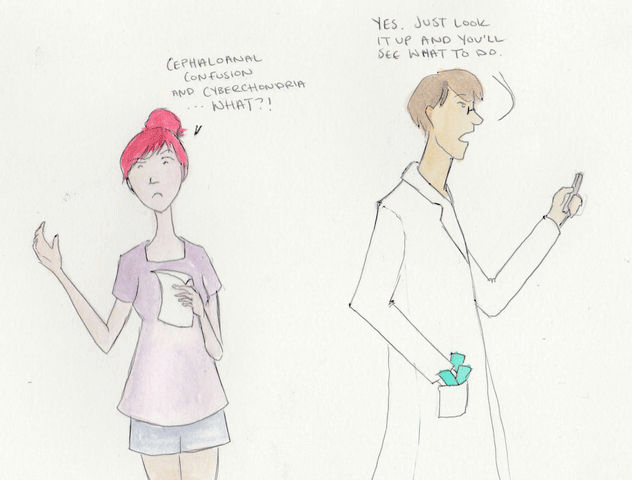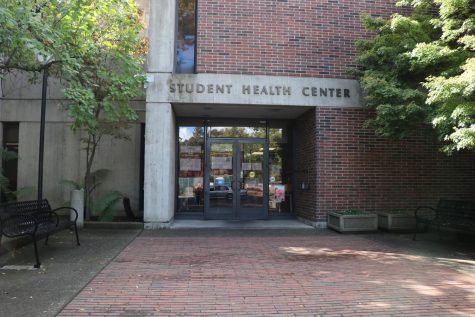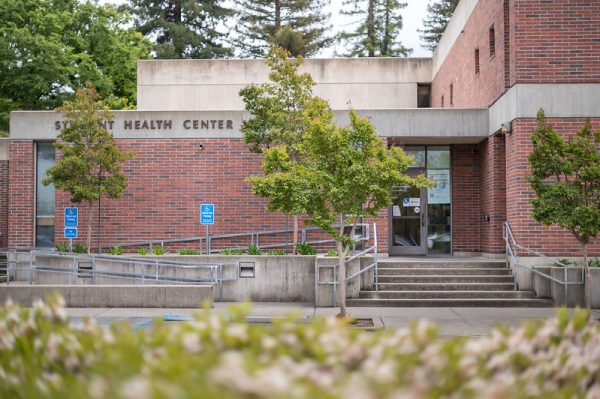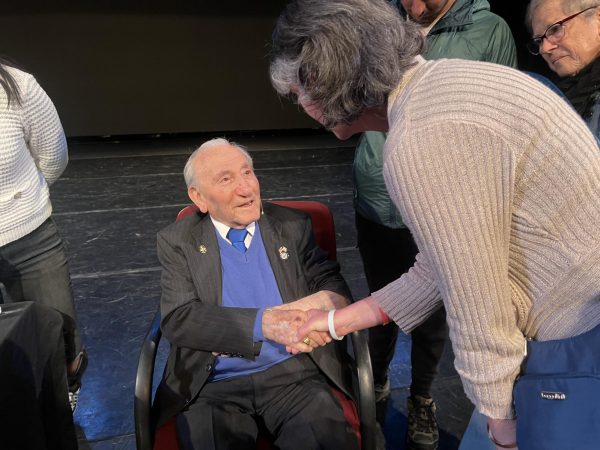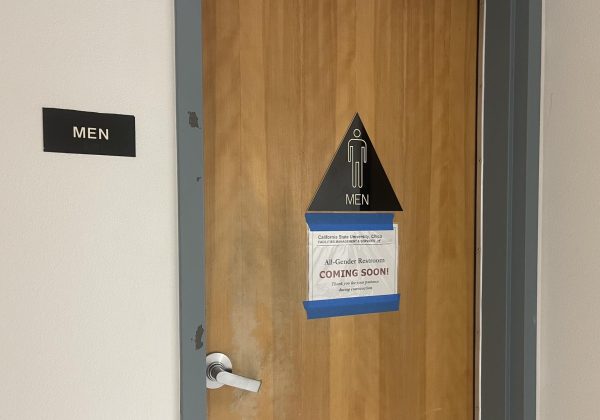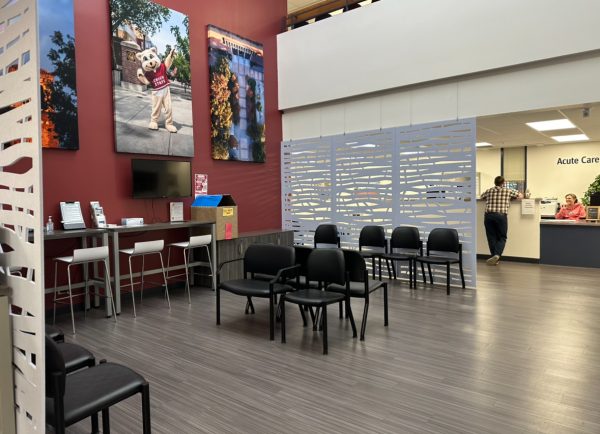The price of quality student health
After a week of not feeling well, Mallory Thomas, senior exercise physiology major, thought she was leaving the Student Health Center with a correct diagnosis of asthma.
She wasn’t.
When the symptoms didn’t stop two weeks after her visit, she went back, they ran a chest X-ray and diagnosed her with pneumonia.
“I had it from the get-go, but the second she read that I had asthma, she said ‘oh it’s just that,’” Thomas said.
She followed up with the center and received immediate antibiotic shots and full treatment, although she believes that she had been living with pneumonia for two weeks prior to the treatment.
“My mom told me that it didn’t sound like my asthma, so she was kind of mad,” Thomas said.
Amidst both positive and negative experiences, it’s no secret that some students on campus feel that the level of quality care at the Student Health Center could be improved. However, what many may not know are the forces behind the problem, which may be attributed to the center’s functionality, student-fee funding and the CSU budget as a whole.
Being a student-fee funded entity: The positives and negatives
According to Executive Order 1102 of the CSU memorandum, all CSU health centers are funded solely on student fees. Each year, students are charged an additional fee as a part of their tuition to fund various additional services.
CSUs can charge students $270 annually for health services. This creates the center’s annual revenue budget that they use to pay for all expenses related to the its operation.
The center’s revenue for the 2015-2016 academic year is estimated at about $4.5 million.
“Our budget, if anyone shows you numbers, looks huge. I have to admit, when I look at it I go, ‘woah.’ But we pay for all of that,” said Jill Cannaday, nurse supervisor for the Student Health Center. “So if you compare us to other departments, know that we are paying for every dime related to medical costs, lights, repairs, every person in the building. Every dime we pay for.”
One positive of receiving no funding from the university is that it makes the service available to students regardless of budgetary woes. While the Great Recession affected many CSUs from 2007-2009 and years after, health services were not affected in the same way as other departments were from the budget cuts.
“We were insulated from that,” Cannaday said. “We were not connected to the ups and downs of the stock market; we were connected to how many people are on campus.”
This way, in theory, students have dependable health services and the university cannot borrow money from the center.
“That ensures that we are always here for students and their health needs,” she said. “But we need to have a fee increase at some point to keep going.”
Increasing medical costs and understaffing has caused them to ask for an increase in student fees every year for the past decade in their annual reports. According to Jeni Kitchell, director of the university budget and resource management, the center has not received that increase since 1998.

“The interesting thing about our budget is that when the governor says that CSU staff can get a pay increase, we’re still paying that salary off of the 1998 budget,”Cannaday said. “The budget didn’t get an increase.”
When taking into account the rise of medical costs and the center being a separate entity — funded solely on student fees and paying all expenses on its own — an increase in their only source of revenue is something that they have made a priority.
“That’s why we keep asking,” Cannaday said. “We need to be able to ask the students for an increase so that we can afford to do what we do. And we want to say that we will do more.”
In many cases, this lack of funding has led to internal problems like understaffing and has contributed to dissatisfaction amongst students.
Student complaints
One of the major complaints from students that the center has seen in its student satisfaction surveys is the wait time, Cannaday said.
“It takes a long time to get in unless you have an appointment,” Thomas said. “Once you’re there I think people are nice to you, but just the process of getting there and being seen is bad. I’ve had times where I’ve gone in and they’ve said, ‘yeah, you probably won’t get seen today,’ and I’m like ‘what?’”
Knowing and addressing that this is a problem, the center does the best they can to improve the wait time. They do between 15-18 studies on quality of care every year, according to Deborah Stewart, medical chief of staff for the Student Health Center.
Additionally, this semester they implemented a more effective triage system in which student symptoms are evaluated by a nurse, nurse practitioner and a doctor to determine which cases are the most time-sensitive and urgent, Cannaday said.
“We get it. It’s real,” she said. “Everybody’s pain is urgent to them and we get that. We try to be kind and empathetic and let them know that we want to get them in as soon as possible.”
Other students have also complained about the attentiveness of the staff members. Gerardo Rodriguez Pimentel, sophomore criminal justice major, received rude customer service the first time that he went into the center.
“After that first day I learned, I’m not going there again,” Pimentel said. “Their level of communication needs to be improved.”
Additionally, one student went into the center because of heart complications and instead was given anti-depressants and was told to lose weight in a blunt way by one of the nurses.
“I wouldn’t say she was mean, but she wasn’t necessarily nice about it,” said Angela Bledsoe, chico state alumna. “I was a student and I didn’t have any options about where I could go for health care. I’m grateful that it was there, but I wish that the service was a little friendlier from the physicians.”
In many cases, the ratio of students to physicians is the jist of the problem, according to Cannaday.
“We have 17,000 students on campus,” she said. “We only have x amount of exam rooms, we only have x amount of people to see them. I would love to hire more staff if we had an increase in funding.”
The university budget
While raising student fees is a seemingly simple solution to the problem the center has with funding, it has continued to be an unpopular motive among students. In previous years, there has been strong opposition to raising student fees on various CSU campuses.
In 2014, Gov. Jerry Brown’s budget summary stated that it would provide an ongoing $142.4 million to UC and CSU schools as long as universities hold tuition flat at 2011-2012 levels through 2016-2017.
Before this past academic year, the center started collecting data and planned to survey students about whether they would accept the fee.
“The CSU chancellor asked all of the CSUs not to increase tuition fees through this academic year and of course we listened,” Cannaday said.
Because of this proposition and the continuing funding problems of the center, it poses the question of why health services are not something that were initially funded by the university.
“When we added that service many, many years ago we decided that the students have to pay for that,” Kitchell said.
Therefore, funding for Student Health Services is a separate entity that students pay for and is capped at a certain amount. The only person other than the CSU chancellor that can change these fees is the president of the university.
“We are very cognizant of the fact that if we increase a student fee, it’s going to have an effect on students,”said Pedro Douglas, vice president for Student Affairs. “We have to feel good about what we’re doing and making sure that if we’re asking you to pay more, what are we giving you for that?”
Douglas, along with the university president and the chief financial officer, has to decide whether the increase of the fees is justified.
“We realize that whenever we go forward it’s students that are going to have to pay more,” he said. “We just want to make sure that we are being good stewards of student dollars.”
The center is continuing to look for solutions to balancing funding and the quality of care that students receive.
“I’m not saying we’re perfect, and I would never say we don’t ever miss anything,” Cannaday said. “We absolutely try though.”
Stephanie Schmieding can be reached at [email protected] or @stephschmieding on Twitter.


